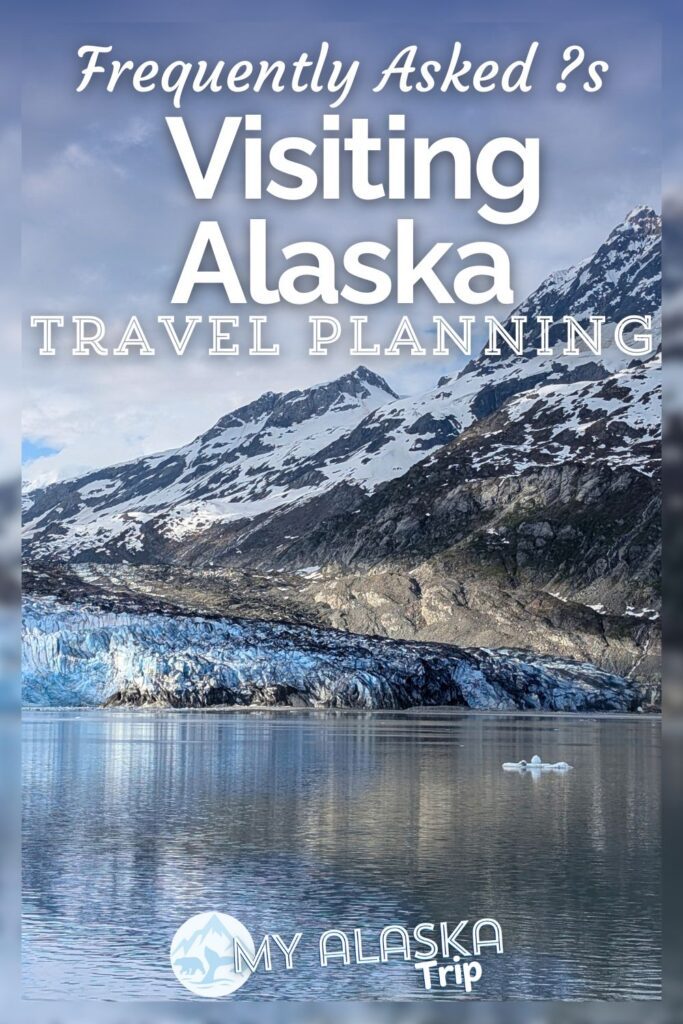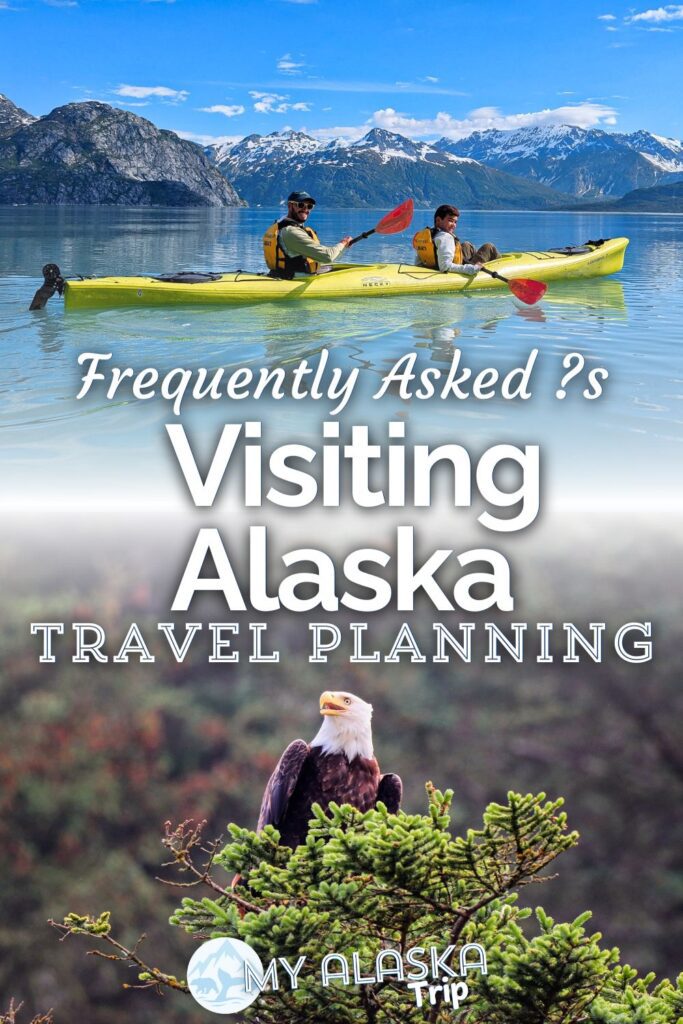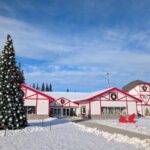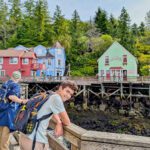We love spending time in Alaska and for so many people it’s something they have only dreamed of, maybe via a cruise ship or maybe really getting to visit and get to meet people. We were chatting in our household and put together a list of the most frequently asked questions about planning a trip for visiting Alaska, including where to stay, things to do, and when to visit. If we’ve missed a question, please tell us, but I think this is a solid place to start when it comes to understanding the adventure ahead.
These are the most frequently asked questions about Alaska that keep coming up, either in emails or in response to our newsletters. Should you be planning a trip to AK and you either don’t know what you don’t know or you just hit a wall with your research or itinerary, check in with us and let us share some of our knowledge and experiences. Spending so much time all around Alaska in different seasons, we have a wide breadth of stories and recommendations, so ask away!
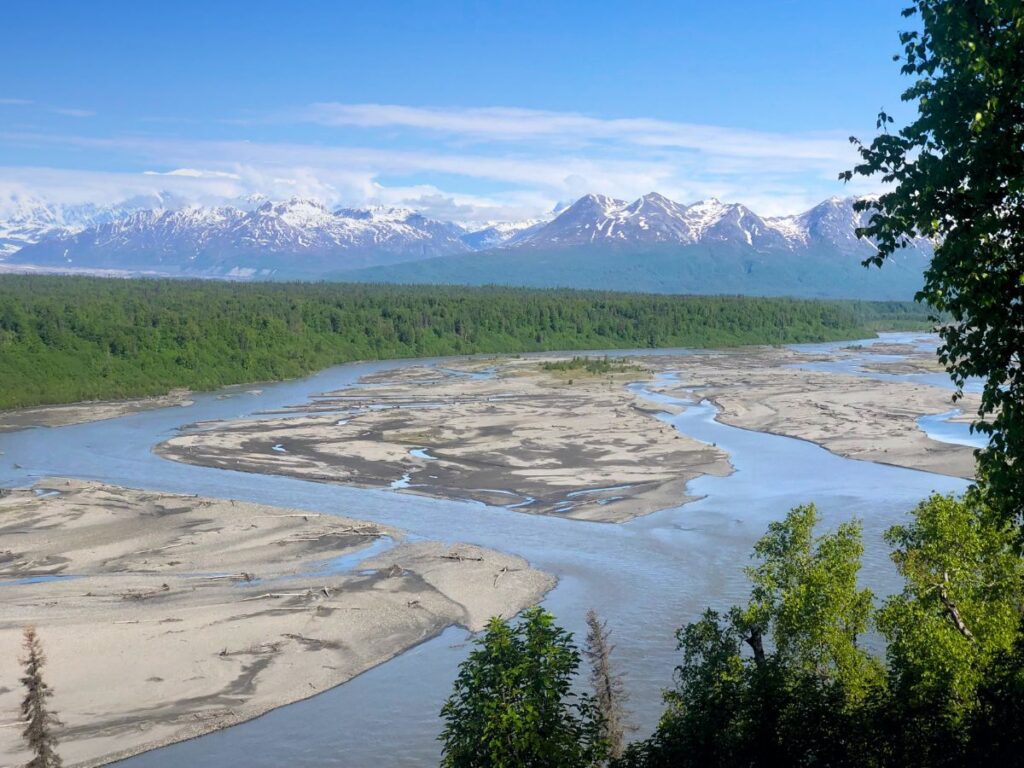
What’s Surprising about Visiting Alaska?
I think that most first time visitors to Alaska are expecting it to be very undeveloped, even in places like Anchorage or Fairbanks. It’s not though. Alaska has very good infrastructure both for tourism and for residents. I’ve lived in two different parts of AK and have had great luck with everything from emergency services to cell service (cell service can be spotty though, I’m not going to lie). Roads are better maintained than many visitors expect, and if you come to Alaska in the winter, you’ll be stunned how quickly highways and surface streets become drivable after a fresh snow or icy conditions.
Another thing that surprises many people visiting Alaska either via cruise ship or flying in is how alive and vibrant the Alaska Native cultures are. Although time and annexation to the USA was not kind to the peoples of Alaska, more than 16% of Alaska residents are indigenous Alaskan people. There are 229 recognized nations and 22 Alaska Native languages spoken and written. It’s amazing and so awesome when you get to spend time with anyone from the Alaska Native community. Places like the Alaska Native Heritage Center in Anchorage or the Sealaska Center in Juneau are perfect for both learning about indigenous history and culture AND for getting to meet and talk with locals about these topics. So special!
One more thing that surprises a lot of first time visitors to Alaska is the wildlife. Yes, you’ll literally see over a hundred bald eagles in a half hour in some places. Yes, there really are moose using the bike paths of Anchorage (the Tony Knowles Coastal Trail) as their own thoroughfare. And yes, if you’re off-trail hiking in Denali National Park you really do need to have your bear spray handy because there really is that much wildlife. While you may visit and not get to see a herd of caribou crossing the highway, you genuinely need to be alert as you drive or hike. Alaska wildlife is beautiful and magical to watch, but it is just that: wild.
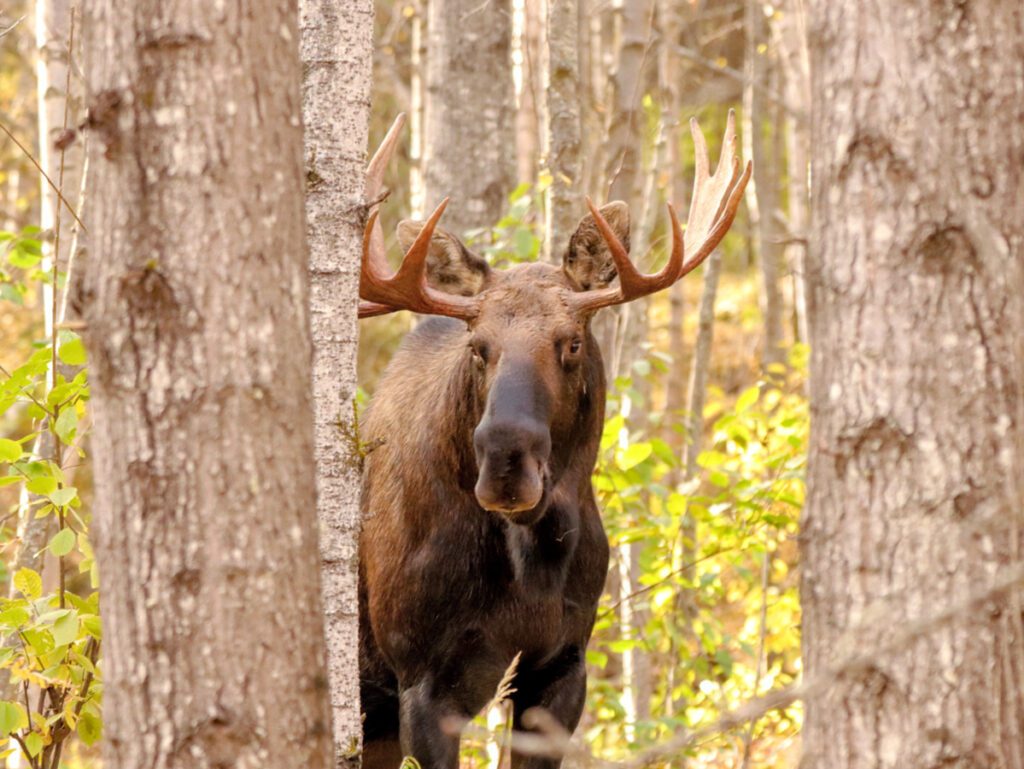
When is the best time to visit Alaska?
There are three distinct times to visit Alaska: summer (busy), fall/spring (soggy thaw) and winter (snow sports). When to visit is really up to you and the type of experience you want to have in Alaska. Of course visiting in summer and never seeing the night is amazing (and it totally messes with your mind), but getting to enjoy winter in AK with the Aurora Borealis dancing above is unforgettable. In any season, the key to enjoying your time is being sure that you have the right clothes for whatever weather befalls you
For summer visits to Southeast Alaska, such as Ketchikan and the Inside Passage, you likely will get a mix of beautiful sunny 70s and rainy misty 50s. On the Kenai Peninsula and Anchorage, the same is likely, but with a stronger lean toward sunny days. When you’re looking at visiting Denali or Fairbanks, in the summertime you may actually be shocked at how sunny and warm it can get. The 20+ hours of daylight help with it too.
A lot of people think winter trips to Alaska sound miserable or just too darn cold. Yes, they can be crazy cold, but also so incredible. Snowshoeing, ice fishing, snow mobiles, the Northern Lights… There are so many great reasons to visit Alaska in the winter. Also, there are far fewer tourists all around the state during the winter, so that’s a bonus, both for crowds and for saving money on accommodations.
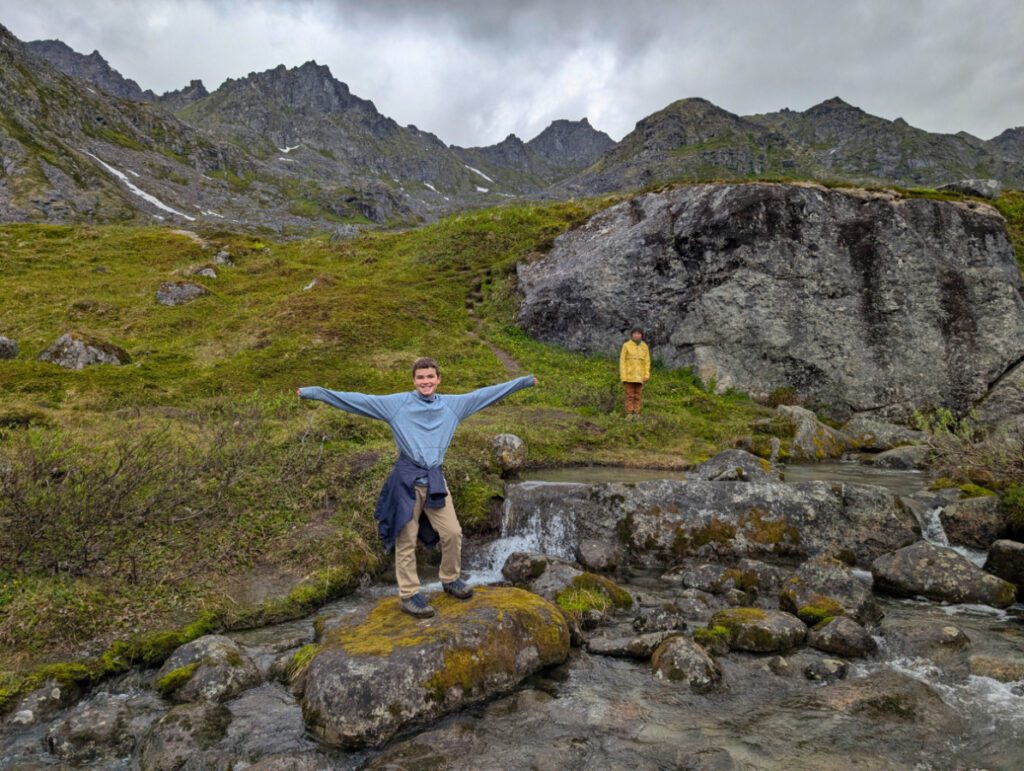
What is the weather like in the different parts of Alaska?
You have to consider a lot of elements when you look at the weather in Alaska. Since so many people arrive as part of a cruise, they’re going to be getting the clouds and rain that pull in off the Pacific Ocean. Heck, in Southeast Alaska there’s even a place called Misty Fjords National Monument where the clouds roll in and you’re transported to an ethereal wonderland in the passages between the mountains. It can be sunny too though, so don’t write off that potential!
If you’re considering the most epic of Alaska trips to destinations like Nome, the Aleutian Islands or Ugqutivik, you should expect a mix of windy and sun, but like with any climate that’s heavily impacted by the ocean currents (yes, even up in the Arctic Circle) things can change quickly.
For anyone planning a winter trip to AK, yes, it’s cold. If you’re visiting Southeast Alaska, such as Juneau or Sitka, you’ll not have as low of temperatures as up in the Interior, but it’s still much colder than Vancouver BC or Seattle. Yes, Anchorage and the Kenai can get those extreme freezes like Fairbanks does too, but they’re less common, and sometimes Anchorage doesn’t even have snow all through the winter. Up the Parks Highway towards Denali and beyond, the intense winter temperatures and weather are very consistent. Days below zero are the norm and snowstorms from October and into April should be expected.
Ultimately, when you’re packing for a trip to Alaska in any season, check the weather reports specific to your destination (not just Alaska as a whole) and trust the information provided to ensure you’ve got the right gear for your visit. Another thing to keep in mind with this though is that there are times that it’s warm in one place and then you take a boat to not so far away and it’s a completely different weather system. If you’re doing any boat tours, always be well prepared for various types of weather.
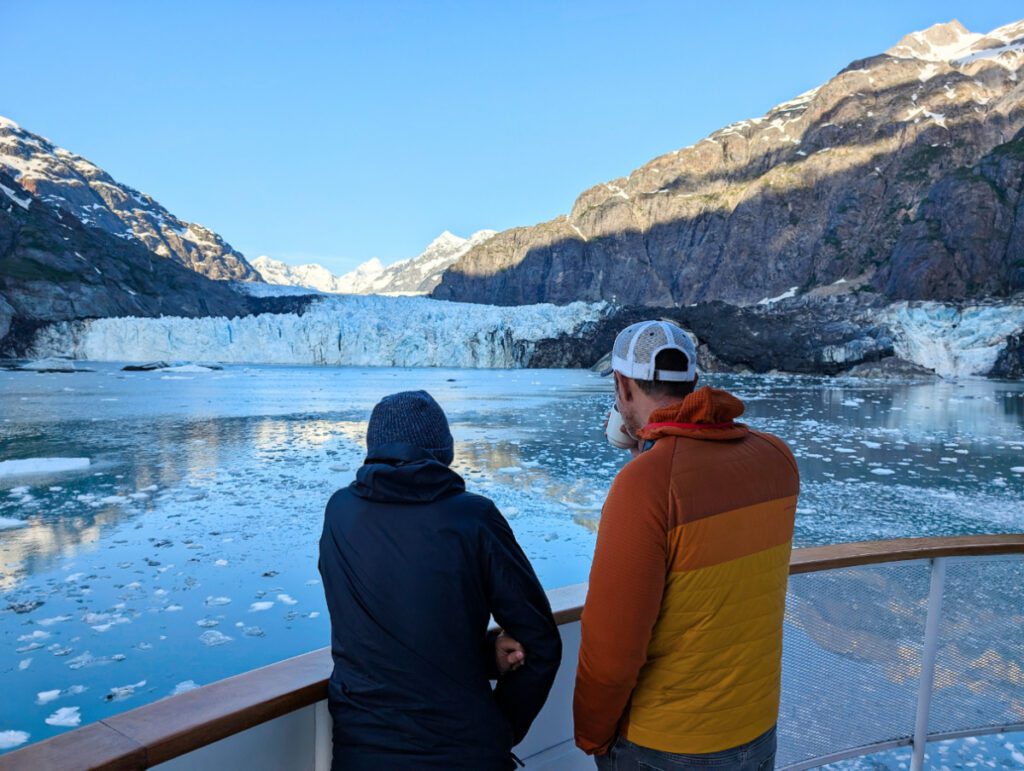
How long should I plan an Alaska trip for?
Well how long do you have? When people ask us how long they need for an Alaska trip, the answer varies. Are you traveling on a budget or is money no obstacle? Do you want a quintessential Alaska trip or a unique and epic adventure? Are you pairing a cruise and a land tour? Depending on your initial plans and interests, you may have different needs for time. Based on the time you have available, here are our suggestions:
- One Week – Juneau and Ketchikan; Seward, Anchorage and Palmer; Seward and Denali; Fairbanks, Denali and Talkeetna
- Two Weeks – Pair any of the combinations above OR do an awesome road trip that includes Homer, Seward, Anchorage, Palmer, Denali and Fairbanks
- Three Weeks – Slow travel from Homer northward or do the two week road trip plan with adventures added to Katmai or Lake Clark National Parks, or Kodiak, Nome or Kotzbue
The longest I’ve spent playing tourist in Alaska (keep in mind that I lived here too) was 20 days, and that allowed for wonderful day trips, remote travel and even some downtime to relax and recover. As you start to plan the things you most want to do and see, you’ll figure out how much time you really need.
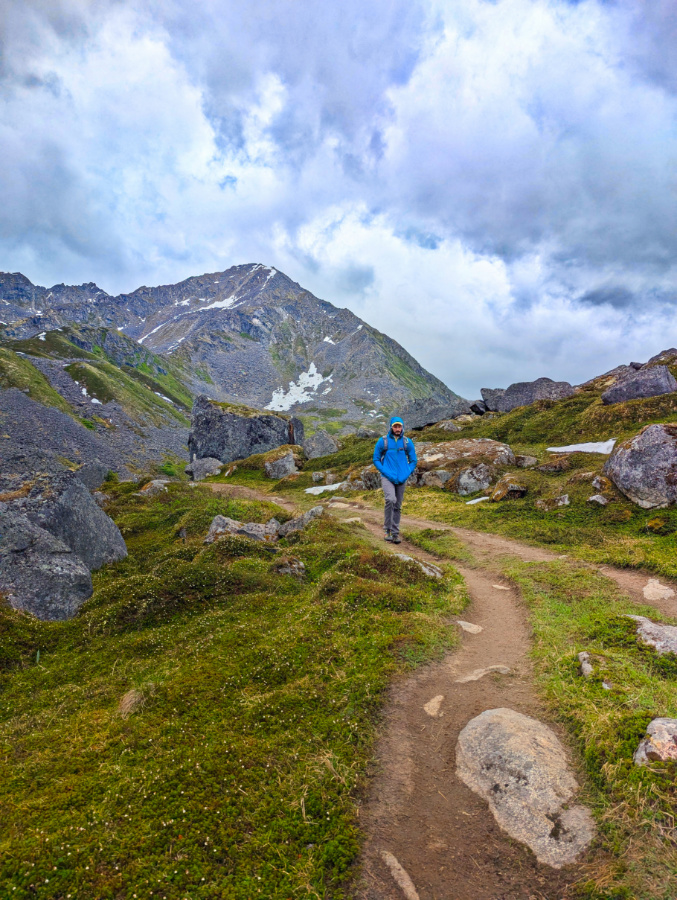
How do I get around within Alaska?
When you’re planning your trip through Alaska, it’s likely that you’ll be flying into Anchorage. That’s where the most direct flights from the Lower 48 come in. From here you can access South Central Alaska, the Kenai, much of the Interior, Valdez and even Prudhoe Bay through roads. Having said that, many rental car companies have restrictions on the highways on which you can drive their cars. Several of the remote highways are NOT paved and can be quite rough on a rental car. Between Anchorage, Homer, Seward, Denali, Fairbanks and Glenallen the roads are paved, but beyond beware.
For including visits to Kodiak, King Salmon, Nome or Utqiagvik you must fly there. Alaska Airlines actually serves many of the remote communities tourists may want to visit, so your miles actually can be used for many of these trips. More niche destinations, such as Bettles or Dillingham will require bush pilots/air taxis. Those trips can be costly, but amazing.
The Alaska Railroad also connects Fairbanks to South Central Alaska. You can enjoy the sights along the way year round between Anchorage and Fairbanks (the winter trip is called the Aurora Route). There are stops in Seward, Whittier, Talkeetna, Denali NP and some whistlestops too. I love riding the Alaska Railroad, but if you’re planning lots of hikes and stops between destinations, this isn’t the way to go. This is much more of a scenic experience, but then you can rent a car at the end of the route if you like.
The last option is using the Alaska Marine Highway System to get between some of the more remote destinations. When the full system is operating and connected, you can sail all the way from Bellingham, Washington to Whittier, and then eventually all the way out to Dutch Harbor, changing boats along the way. Between the towns of Southeast Alaska, you can also use the AMHS, but driving on or walking on. Reservations are required!
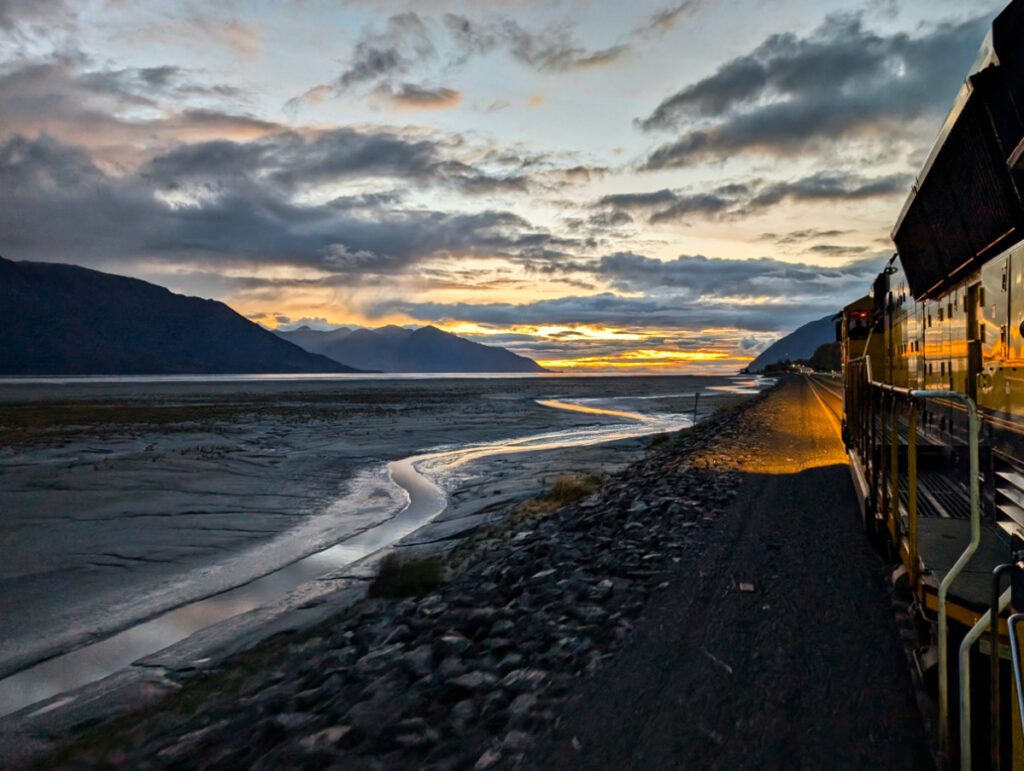
What should we expect from Hotels and Lodges in Alaska?
You can book any range of accommodations when you’re planning your trip for visiting Alaska. You can find budget motels and five star hotels and lodges. I think many people expect hotels in Alaska to maybe be a little cheaper than other destinations because they don’t expect it to be as developed and upscale as it is. Not like much of AK is fancy, because most of it isn’t, but there are some choice places to stay that have dining and experiences that are just as nice and elevated as you might find in Chicago or Los Angeles. Check out our favorite Alaska lodges!
As you’re researching where to stay along your itinerary, look for the cool rustic lodges and camps. Sometimes this means that you’ll get to stay in a “dry cabin” or a backwoods camp, and sometimes it just means that things aren’t luxe like a hotel might be. Many lodges and camps are family run and very low key, so know that you’re likely not arriving with all the amenities and acknowledgements that your top tier brand loyalty status may warrant when you plan a beach vacation.
What you can expect is in any level of accommodations, you’ll be welcomed and well taken care of. Those who operate in hospitality here genuinely love where they live and want to see others enjoy it too, and they want to see it enjoyed responsibly. That comes out in the interactions you have with the staff and often in how the different Alaskan lodges are resorts are run.
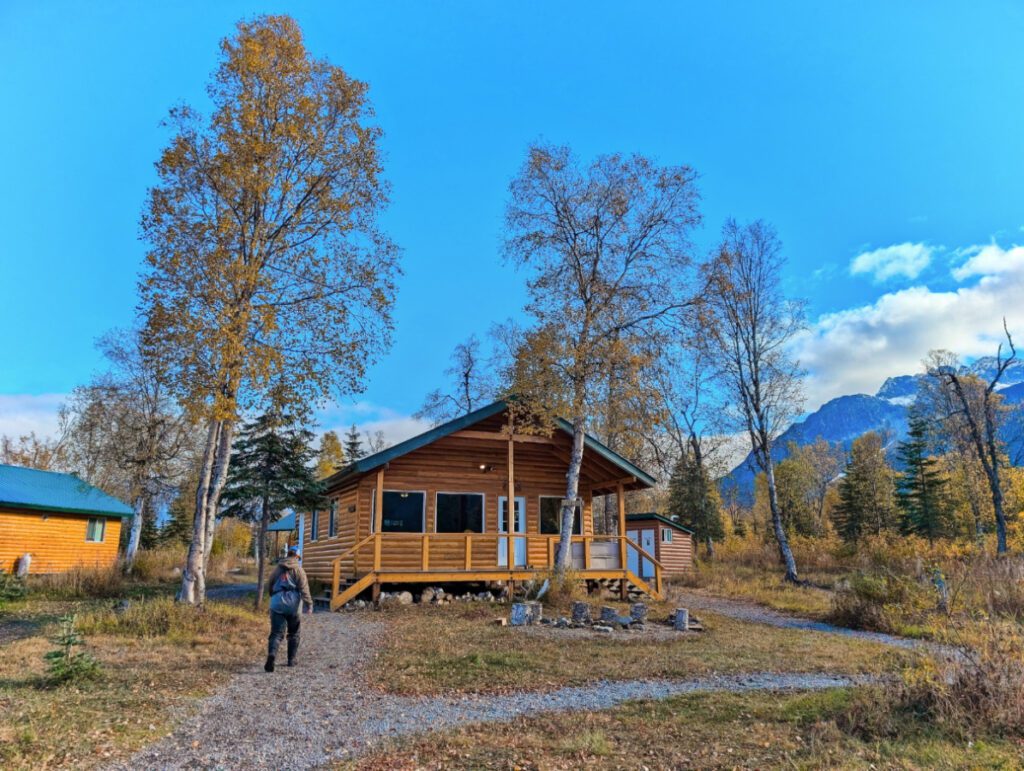
Should we book hotels, lodges or cabins?
I think that any trip to Alaska needs to include at least a night or two someplace that is very uniquely Alaskan. If you’re going to be based out of one of the cities during your visit, such as Anchorage, Fairbanks, or Juneau then you’ll be able to choose from a variety of hotels, but as you plan time in smaller towns, even well known ones, you’ll find more lodges and smaller accommodations.
I think a hotel is great when you’re in the cities because you have the amenities, the staff for supporting your visit and maybe even the ability to use or earn loyalty points, but this means you’re staying in the city each night. Much of travel in AK means going far from the cities, so if you have the opportunity to stay out in nature, do it. While the drive from point A to point B is always gorgeous here, it’s better to spend more time not in a car than driving around to start and end your day. Having said that, remote luxury and rustic stays abound, and depending on your budget you’ll find both in nearly every region of Alaska.
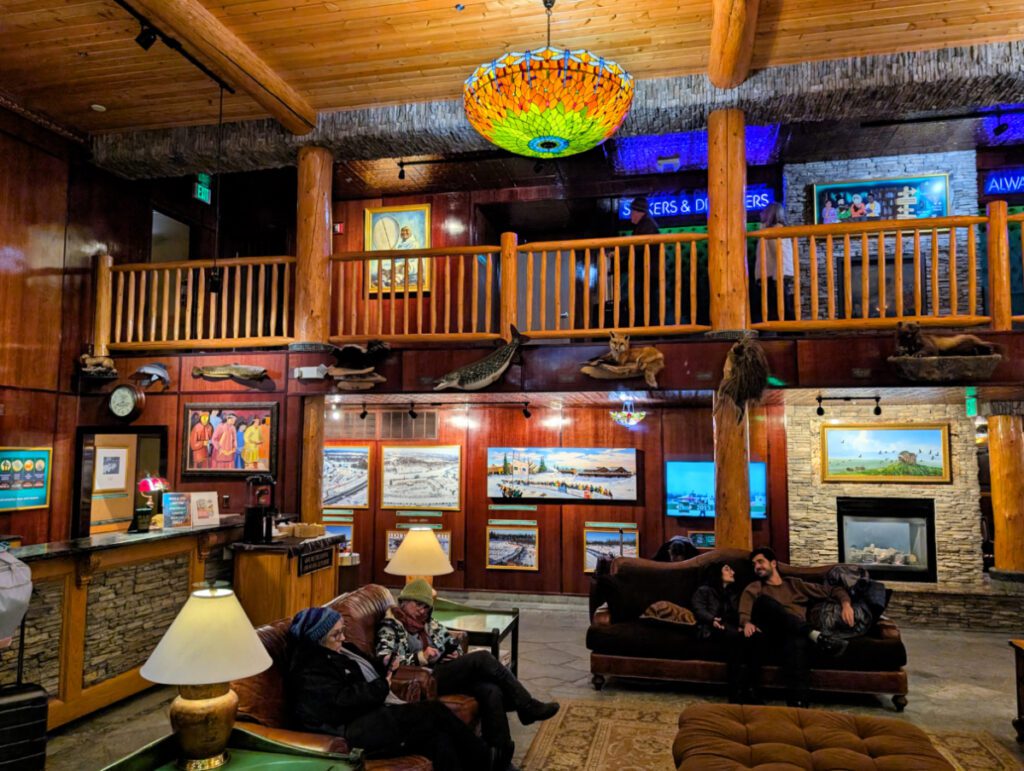
Is there good camping in Alaska?
Camping in Alaska is awesome, but it’s complicated to do if you don’t live there. You’ll find lots of camping options all around, from state parks to national parks, private campgrounds to public lands. What makes it complicated is putting together the camping gear if you aren’t traveling with it. If you’re planning on doing the road trip through British Columbia and the Yukon, you can bring all your own gear (and it’s an epic adventure!), but if you’re flying in, you’ll need to set up camping gear rental.
Alaska Outdoor Gear does camping gear rentals out of both Anchorage and Fairbanks. They will be able to put together custom bundles based on the type of camping you plan on doing, the projected weather and the number of people in your party. They also do bear spray rental, which a lot of visitors are inclined to do (here’s another vendor for Alaska bear spray rental too!)
Some of the most epic places to consider camping in Alaska (in South Central to the Interior) include the Homer Spit, Skilak Lake (my fav), Eklutna Lake, Denali State Park, Denali National Park (drive-in at Teklanika, transit bus to Wonder Lake when operational), Tangle Lakes and Liberty Falls State Rec Site (near Wrangell-St Elias NP).
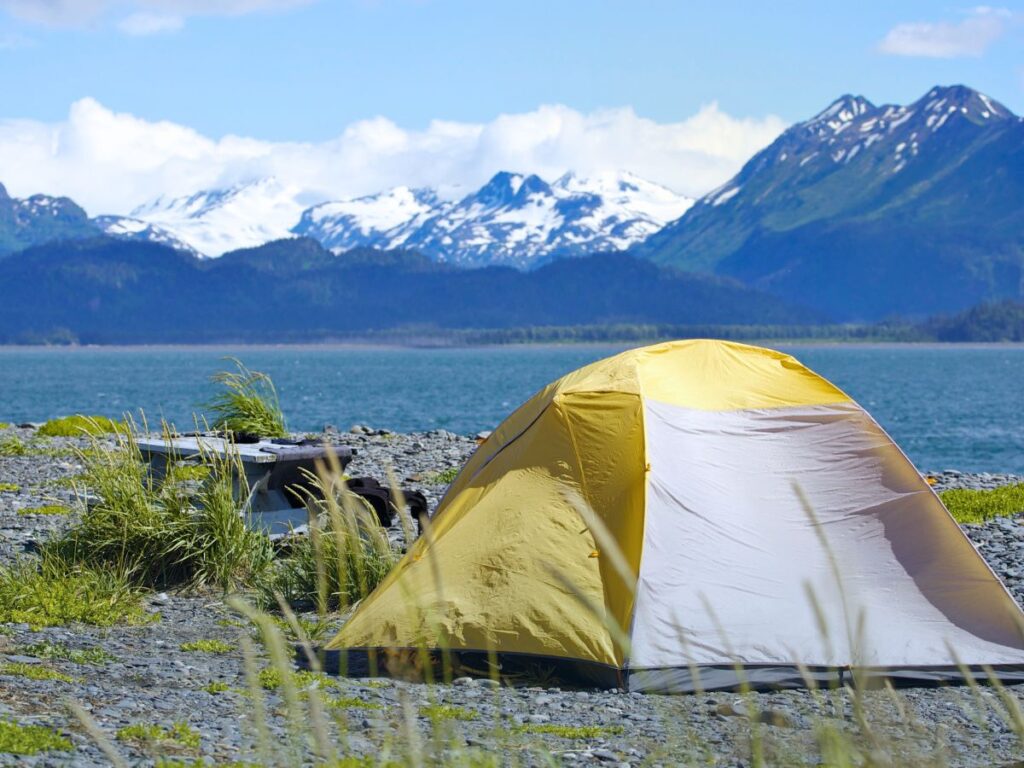
What are the best activities around Alaska?
For me, I am always on the lookout for wildlife in Alaska so whenever I’m building an itinerary or recommending activities for somebody, I focus on experiences that bring the best opportunities to see animals. Getting to see moose and bear in the wild is very special, but Alaska is also known for its amazing marine life. The best activities to plan to see wildlife are going to vary depending on the region you’re visiting.
In Southeast Alaska, like Ketchikan or Haines, you’re going to want to do a whale watching boat trip or a guided trip to find bears. On the Kenai Peninsula rafting or doing one of the trips into Kenai Fjords National Park is going to be key to seeing a good amount of wildlife. As you head towards Denali National Park, the bus tours or drop-off service into the park are the best activities to make a part of your trip.
Since bears are such amazing creatures to observe in the wild, if your budget allows, try to include some sort of bear safari. This may be a flightseeing trip to Katmai or Lake Clark or it could be a boat trip on a river from Talkeetna. Bear activity lasts from late May to early October, so there’s a broad range of dates that are good for it. Visiting one of the salmon spawning areas in Southwest Alaska really provides the most epic sort of wildlife experience.
Other awesome activities to plan for when visiting Alaska including hiking, rafting, salt water fish, fly fishing, dog sledding (even in summer) and watching the Aurora Borealis in winter.
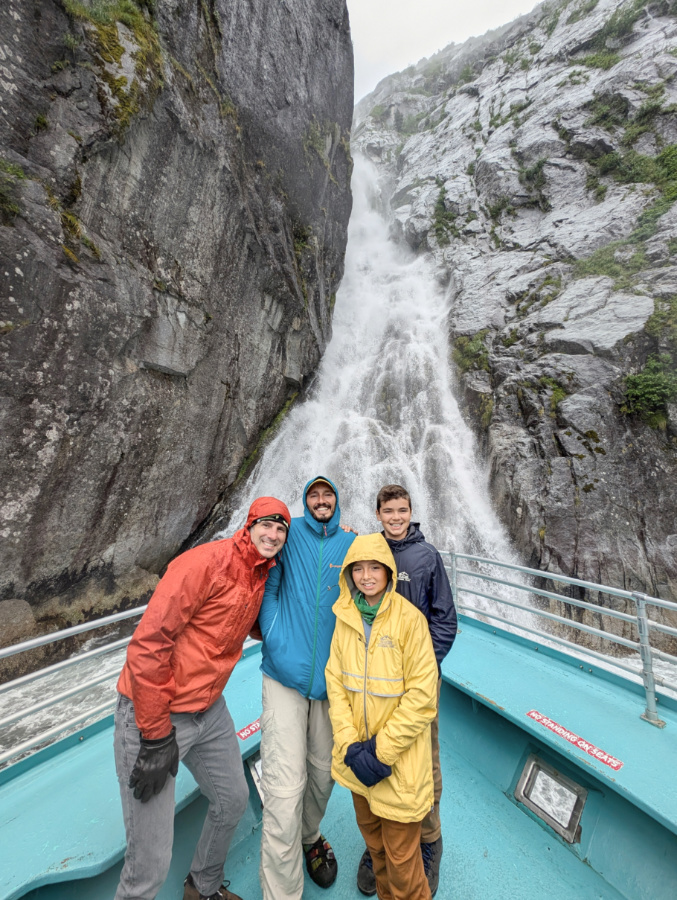
Can I fish anywhere in AK? Do I need a fishing license for one day?
Just like anywhere else in the USA or Canada, there are fishing regulations in place to ensure sustainability for the runs, the wildlife and the fishing industry. That means you can’t just pull over on the highway and land a king salmon during your trip. What you’ll need to do is purchase an actual non-resident fishing license which can be done for 1, 3, 7, or 14 days, or for a full year. In addition to this, you’ll need to get an additional stamp if you plan on fishing for king (chinook) salmon. In general, if you’re planning a fishing trip in Alaska the cost of a fishing license for a week is $45 ($90 total with King tag) or $75 for two weeks ($150 total with king tag).
I recommend going with a fishing guide if it’s in your budget. You’ll still need to get your fishing license, but the guide will provide the gear, the transportation, the skills and a variety of other benefits. Guided fishing is a premium price, but if you’re a novice or are limited for time, it’s the way to go.
If you’re an experienced fisherman, bring your own gear or rent it when you arrive in Alaska. Get your fishing license, figure out where to fish, and then be sure to report your catch (some reporting is required).
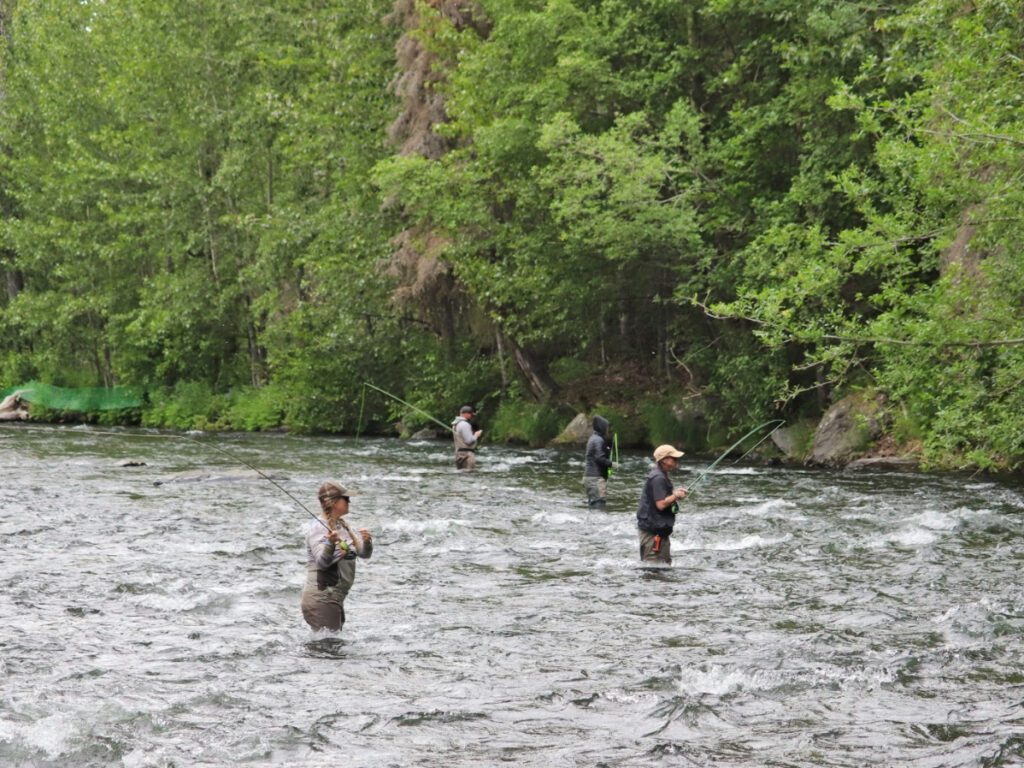
What State and National Parks should we visit in Alaska?
There are some EPIC parks in Alaska, and whether you’re doing a road trip or a cruise (we’ll talk about that below) you’ll likely visit at least one. For the land tour folks, Kenai Fjords National Park and Denali National Park are both rather easy to plan for. You can stay in Seward for a day or two of exploring Kenai Fjords and its wildlife, so that’s just two hours south of Anchorage. For Denali National Park, it’s about 4.5 hours north of Anchorage, so staying in the village at Denali National Park is recommended. You can also visit from Fairbanks.
Both Lake Clark National Park and Katmai National Park are more difficult to get to, or at least are more cost prohibitive. Both of these parts are located in Southwest Alaska and are accessible by float plane. You can do a day trip from Anchorage or fly commercial to King Salmon and then have a more tailored, longer visit to the parks. Rust’s Flying Service does a wonderful trip from Anchorage that will give you the nearly full experience in a day.
Kobuk Valley and Gates of the Arctic National Parks are much more difficult to get to. These parks are located in the Interior of Alaska are require bush pilot trips via an air taxi or tour service. They are very unique places that few people get to visit. The last two National Parks in Alaska are Glacier Bay and Wrangell-St Elias. For Glacier Bay you likely will visit via a cruise ship, but you can also plan it as a trip from Haines, Juneau or Sitka. Wrangell-St Elias National Park can be driven to from Glenallen to McCarthy or visited by charter flight. You can also visit the waterside portion from Yukatat.
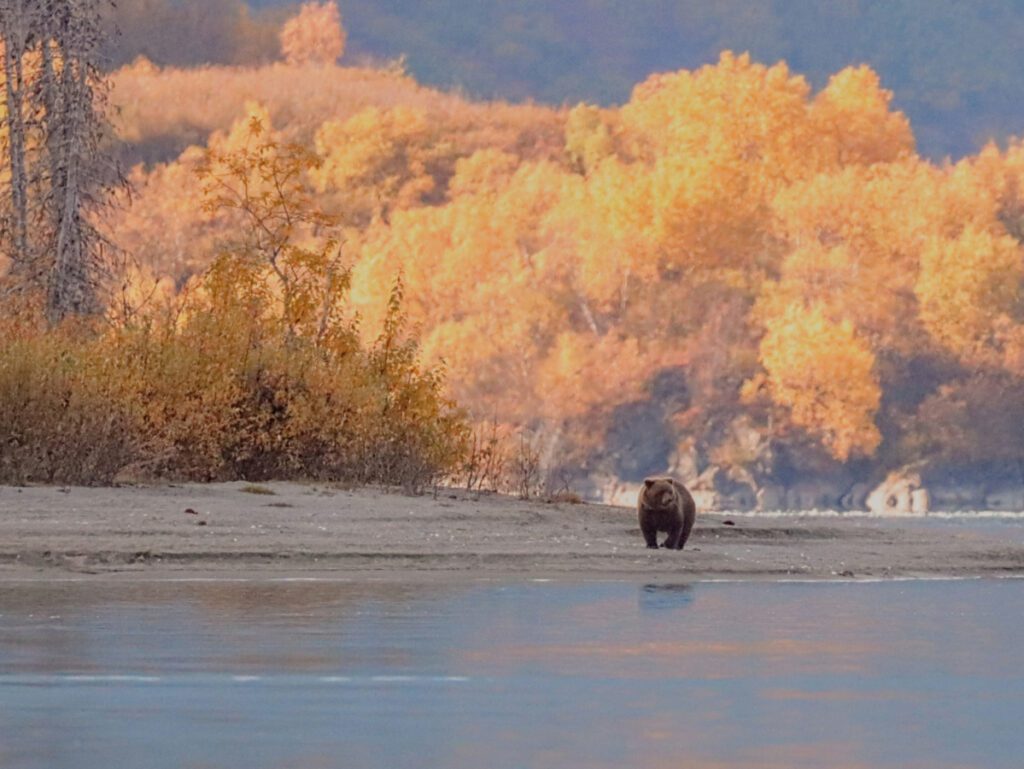
Is an Alaska Road Trip or Cruise better?
It’s difficult to tell somebody which version of an Alaska trip they’ll enjoy more. If you’re a cruise person who visits the Caribbean often and loves the cruise environment, you may like doing an Alaska cruise too, but it’s a very different experience than the Caribbean. While it can get very warm and even hot in Alaska in the summer, that doesn’t mean that you’re going to have that sort of weather on an Alaska cruise. It’s likely you will have sweatshirt/foggy/rainy days onboard just as much as sunny ones. The pool party vibe on an Alaska cruise isn’t as common as in the Caribbean.
Having said that, the view of wildlife and glaciers from your state room or the decks of a cruise ship is really something. Knowing that you’re simply traveling along and the beautiful sites are coming to you is kind of cool. Cruise ships offer luxury and dining that is sometimes difficult to find on an Alaska road trip, so if that’s what you’re looking forward to, I think you know what to plan.
Check out our unforgettable experience sailing with UnCruise in Southeast Alaska!
For an Alaska road trip, you have so much more flexibility than you get on a cruise. YOU are in charge of your timeline and the sights you’ll see. You can still see whales and glaciers on a road trip, you just have to drive to the boat dock or glacial valley instead of stepping out on your cruise ship deck. I am not one for big crowds and busy places, so the solitude of exploring Alaska on a road trip is much more appealing to me than making port with thousands of my closest friends. You do you.
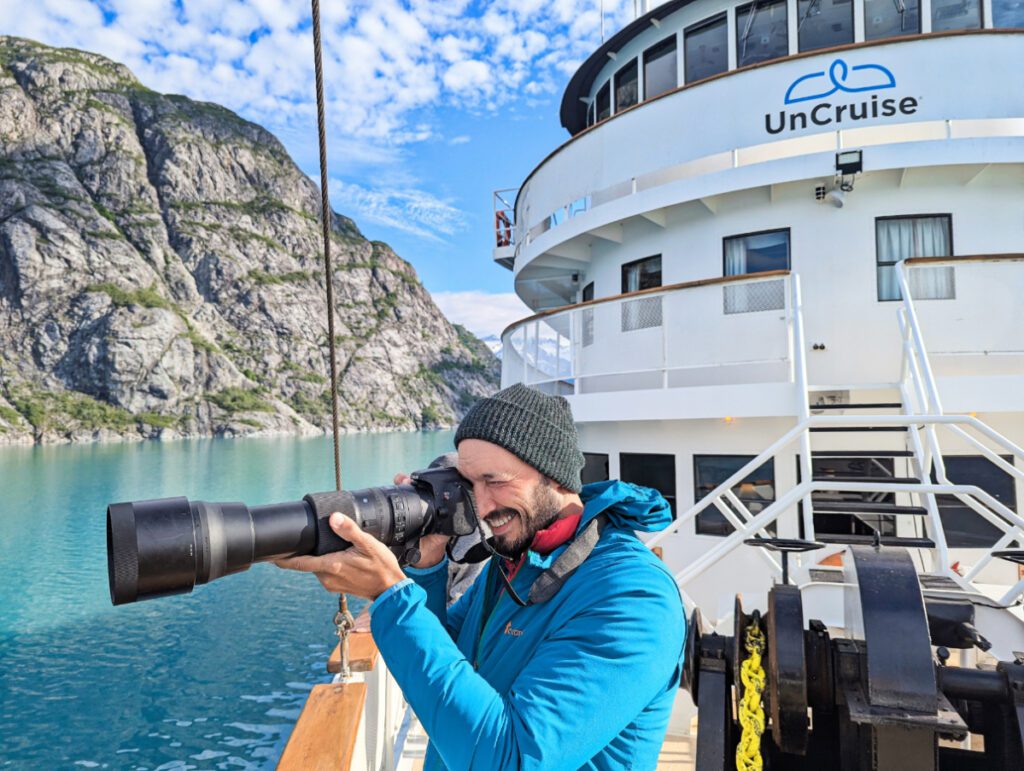
How can I save money on my Alaska vacation?
Visiting Alaska in on par with the cost of visiting Hawaii (check out our Hawaii site, MyAlohaTrip.com). Accommodations, tours and food are all pretty expensive in comparison to visiting a place like the Grand Canyon or a Florida beach vacation. IT’S WORTH IT THOUGH! So, here’s how you can save some money when you’re planning a trip to AK:
- visit in the shoulder seasons (late spring and early fall are best)
- join a group tour through Alaska (amazing fun!)
- book in advance because prices climb as travel dates near
- consider all your options, ex: Lake Clark vs Katmai, Prince William Sound vs Kenai Fjords, hiking vs boat trip…
- Purchase an Alaska deals pack (coupon book) – both Alaska Travel Deals and Northern Lights Coupons have incredible savings on both local dining and tourist attractions (even transportation deals)
- think about alternative places to stay, such as midtown Anchorage vs downtown, or Cantwell vs Denali Park
Ultimately, when you’re planning your trip to AK, remember that it will cost you more than other destinations so either allow yourself the grace to spend more than you normally do or plan your trip for a time when the overall costs are lower.
Note: keep in mind that if you’re booking a trip in May it’s not likely you’ll be able to go rafting or do all of the hikes you may want to as there may still be snow. And if you’re visiting in fall remember that many tourist activities and travel hubs start to shut down after September 15th or so, so be ready to be flexible.
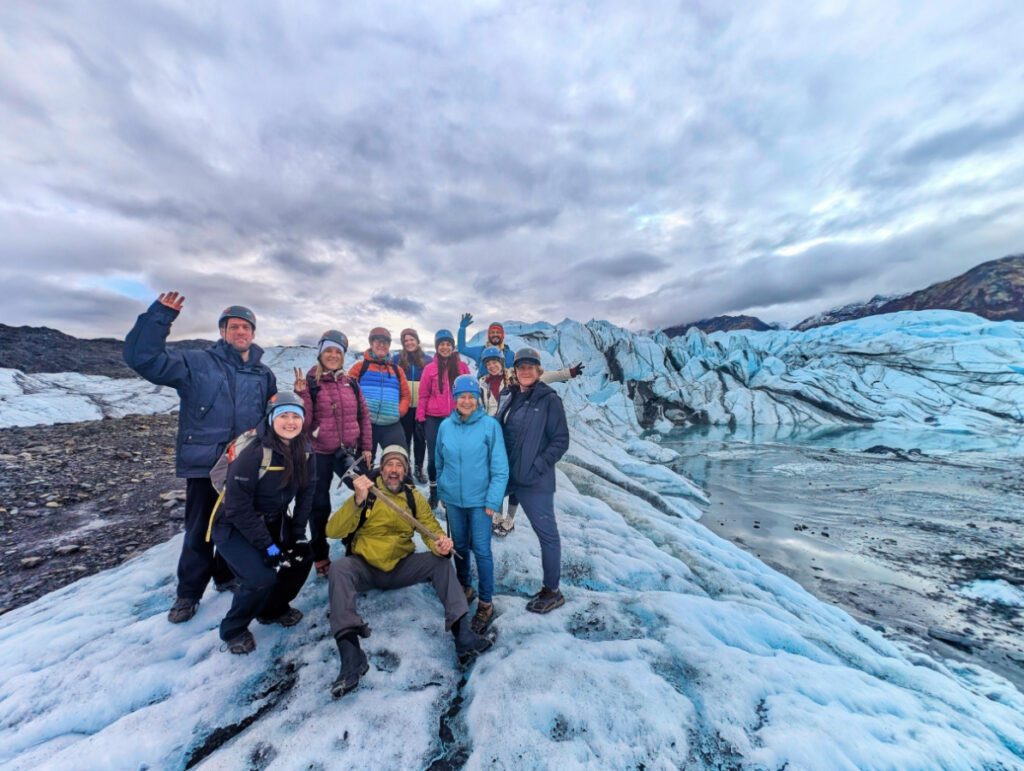
That should answer most questions about the general adventure of visiting Alaska. Planning a trip like this is a big task, but it’s so much fun to both put together are experience. If you have any other questions or need some help with your itineraries or travel booking, always feel free to reach out to us. Leave a comment or send us a note and we’ll be happy to help you build an amazing Alaska trip!
